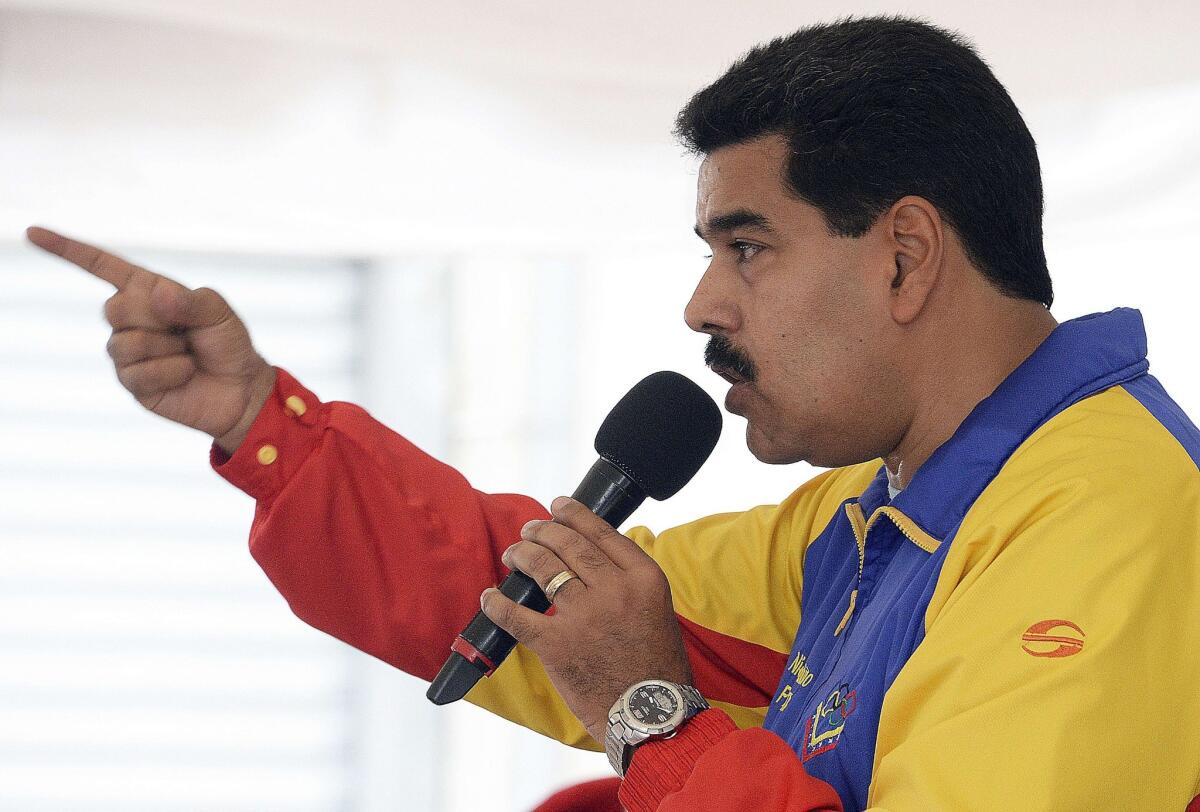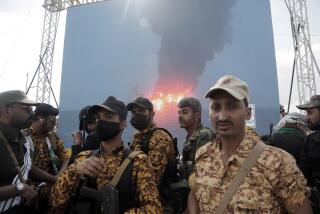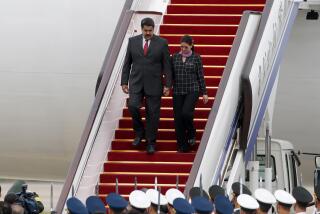Downed plane in Venezuela draws questions from Mexico

- Share via
MEXICO CITY -- When a high-ranking officer in the Venezuelan military posted the picture of the burned-up remnants of a small Mexican aircraft this week on Twitter, it launched a flurry of questions.
Who had been in the plane? What had it been doing in Venezuela? Was it involved in the drug trade? Why had it gone up in flames? And where was the crew?
Those key questions remained unanswered Thursday afternoon, two days after Venezuelan military officer Vladimir Padrino Lopez posted the photo of the blackened, smoking ruins of the plane, which he identified as a small Hawker passenger jet. The mystery was threatening to create a row between two nations whose diplomatic relationship has been particularly rocky in recent years.
Padrino sent out a pair of tweets Tuesday in which he partially described the fate of the plane. In the first message, he said that the country’s Aerospace Defense Command “detected and intercepted” the plane Monday.
The other message included the image of the blackened, smoking, partially destroyed plane on what appeared to be a broad, grassy plain. Padrino referred to the plane as an “air invader” that had been “immobilized” by Venezuela’s air force in the state of Apure, which borders Colombia.
Apure state is well known as a place where airplanes take off packed with Colombian cocaine bound for points north, typically Central America. From there, the drug is typically moved by Mexican cartels north to the United States.
On Wednesday evening, Mexico’s interior minister, Miguel Angel Osorio Chong, told reporters that Venezuelan officials had informed their Mexican counterparts that the plane had been asked to land by Venezuelan officials, who then set fire to the aircraft after it landed.
But Osorio Chong said the Mexicans lacked “much information” about the incident. Among other things, he said, the Mexicans wanted to know if “there is the involvement, or there are people, of Mexican nationality.”
The Mexican newspaper El Universal, citing a government official, reported that the plane took off from an airport in Queretaro, Mexico, on Monday around noon, and must have had to make at least one refueling stop before flying on to Venezuela, given the size of its fuel tank.
Venezuelan President Nicolas Maduro, meanwhile, gave a speech on national television Wednesday in which he boasted that 30 airplanes linked to drug trafficking had been brought down while in Venezuelan airspace since the passage of a 2012 law aggressively targeting such planes. The last such plane, he said, had “recently” been taken down in “national waters.”
Despite Maduro’s contention that the Venezuelans are adamantly fighting the drug traffickers, U.S. officials have long suspected Venezuela’s socialist government of maintaining ties with Colombia’s left-wing rebel group, the Revolutionary Armed Forces of Colombia, or FARC, which is believed to be heavily involved in large-scale cocaine smuggling operations.
In 2008, the U.S. Treasury Department accused two senior Venezuelan government officials and one former official of “materially assisting the narcotics trafficking activities” of the FARC.
The airplane incident has the potential to threaten diplomatic ties between Venezuela and Mexico that have been on the mend of late. The two countries broke diplomatic ties in 2005 after Venezuela’s late president, Hugo Chavez, insulted his Mexican counterpart, Vicente Fox, calling him a “puppy dog” of the U.S. “empire.”
Diplomatic relations were reestablished in 2007, and Mexican President Enrique Peña Nieto traveled to Caracas in March to attend Chavez’s funeral.
ALSO:
Congo’s M23 rebel chief, scores of fighters surrender in Uganda
Britain’s top spies step from shadows to denounce Snowden leaks
Pakistan Taliban names militant who ordered attack on schoolgirl as leader[email protected]
Sanchez is a news assistant in The Times’ Mexico City bureau.
More to Read
Sign up for Essential California
The most important California stories and recommendations in your inbox every morning.
You may occasionally receive promotional content from the Los Angeles Times.










